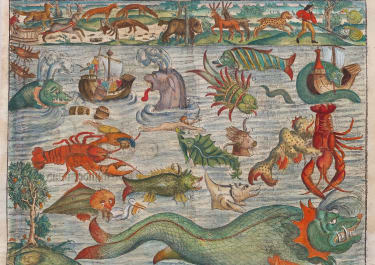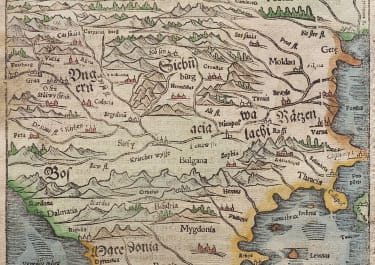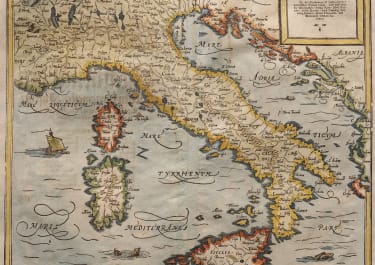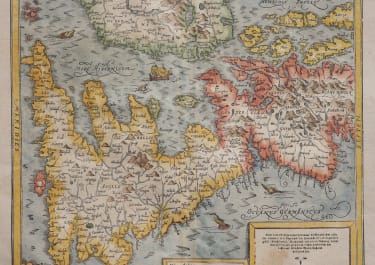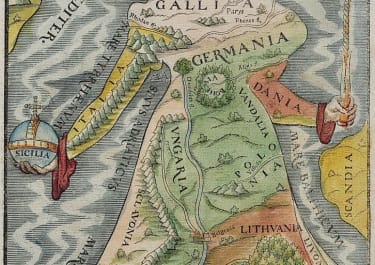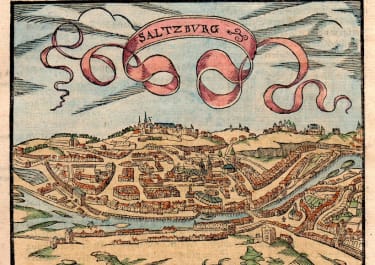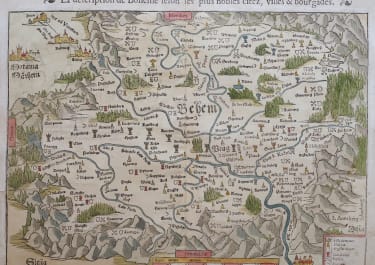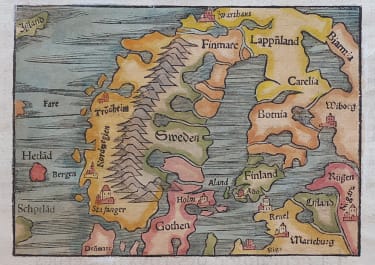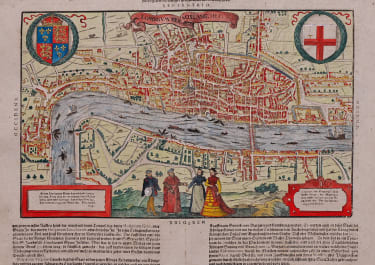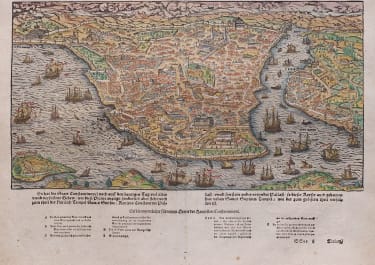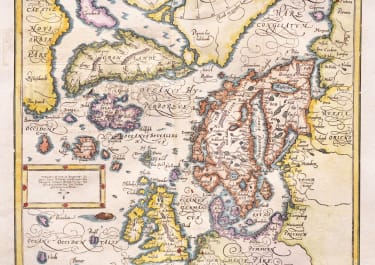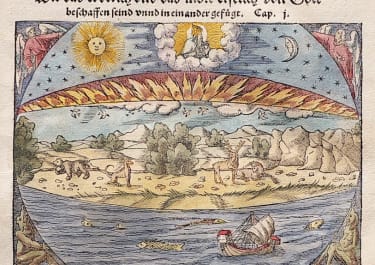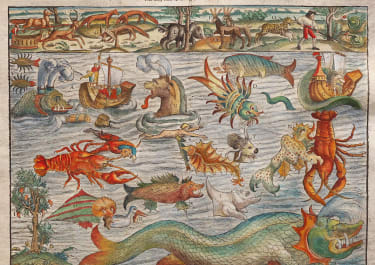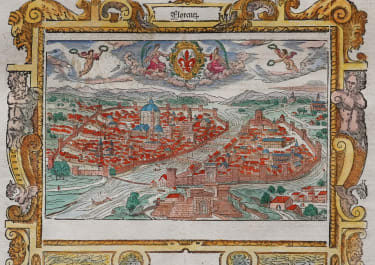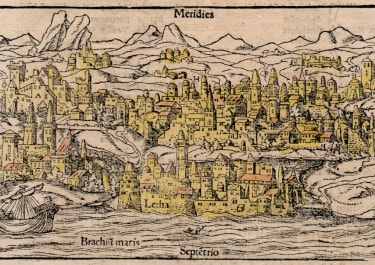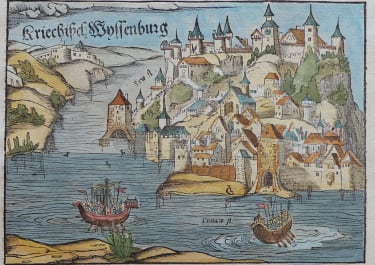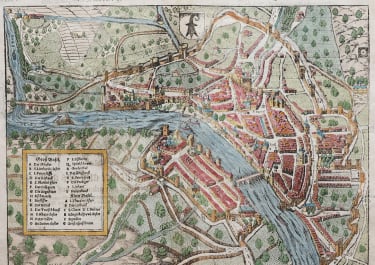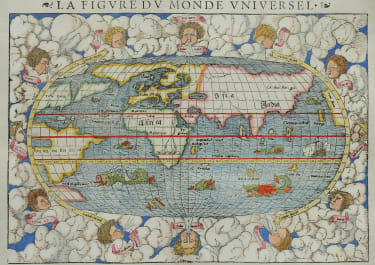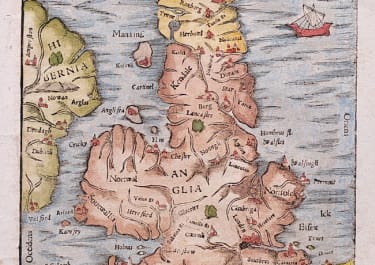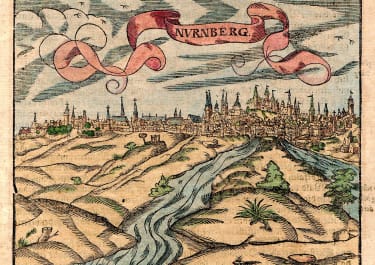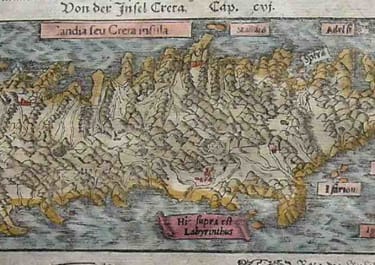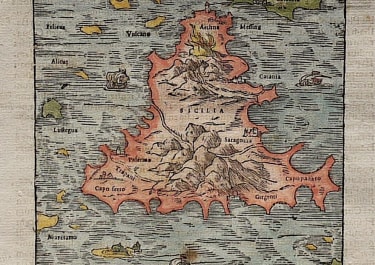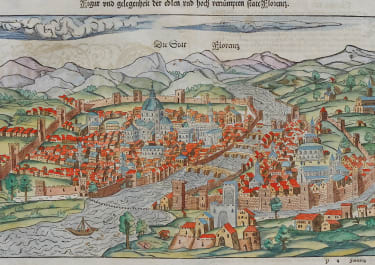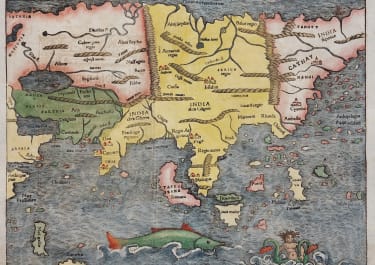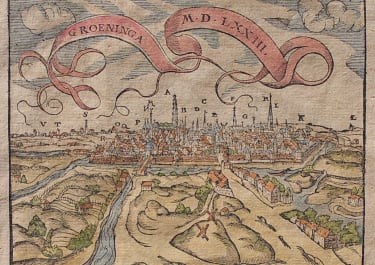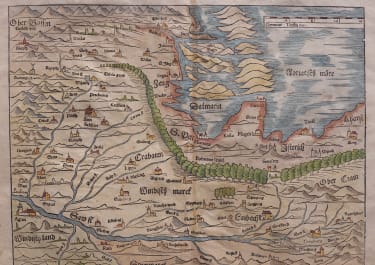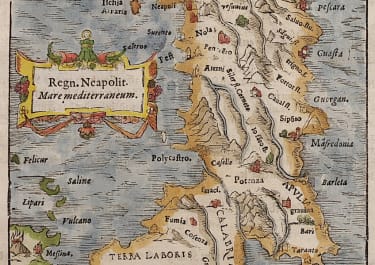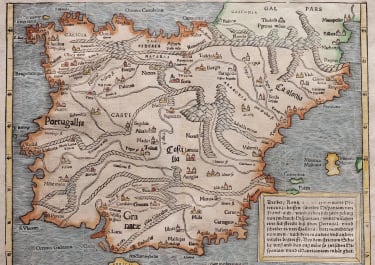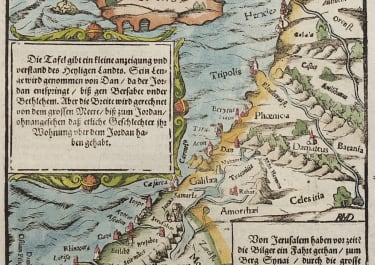NO TITLE EUROPE AS A QUEEN
£1150
The famous allegorical map of Europe as a queen from a 1593 edition of the Cosmographia.
This is a nice full-color example of Munster's map of Europe in the shape of a queen. The regent's head and crown constitute the Iberian Peninsula, her arms Italy and Denmark, and her dress the countries from France to Bulgaria. In what might be interpreted as a political statement, little did they know about BREXIT.. Great Britain and Ireland are tiny, insignificant islands from which the queen turns her head.
Organizing maps after human forms dates from at least the Middle Ages and continues to this day. The first known example of a printed Europa Regina map was Putsch's 1537 map, and his close relation to the Holy Roman Emperor Ferdinand I has been taken to mean that his map represents Habsburg power in Europe. Evidence on this is limited, however, and it can be seen that the present map offers little in the way of support to this theory. While the Habsburg's long rival, England, is depicted as insignificant, one of only two cities named in Europe is Paris, capital of a Habsburg rival power. While tempting to ascribe political statements to maps such as these, one must be skeptical of overly grand interpretations.
Few mapmakers chose to portray Europe in such a manner, and maps such as these from the late 16th century are scarce.
Excellent hand colour. A mark in margin well away from printed surface.
Very good condition
code : M5150
Cartographer : Sebastian Munster
Date : 1592 Basel
Size : 16*26 cms sheet 33*21 cms
availability : Available
Price : £1150
Originally a scholar studying Hebrew, Greek and mathematics, Sebastian Munster (1489-1552) eventually specialised in mathematical geography and cartography. It was this double ability - as a classicist and mathematician - that was to prove invaluable when Munster set himself to preparing new editions of Solinus’ “Memorabilia” and Mela’s “De Situ Orbis”, two classical descriptive geographies containing maps, and his own two greatest works, the “Geographia” and “Cosmographia”. These reflect the widespread interest in classical texts, which were being rediscovered in the fifteenth century, and being disseminated in the later fifteenth and sixteenth century, through the new medium of printing.
The “Geographia” was a translation of Ptolemy’s landmark geographical text, compiled in about 150 AD., illustrated with maps based on Ptolemy’s calculations, but also, in recognition of the increased geographical awareness, contains a section of modern maps. In the first edition of the “Geographia”, Munster included 27 ancient Ptolemaic maps and 21 modern maps, printed from woodblocks. Subsequent editions of the “Cosmographia” were to contain a vast number of maps and plans.
One consequence of Munster’s work was the impetus it gave to regional mapping of Germany, but Munster was also the first cartographer to produce a set of maps of the four continents on separate maps. Most importantly, through his books (the “Geographia” and “Cosmographia” alone ran to over forty editions in six languages), Munster was responsible for diffusing the most up-to-date geographical information throughout Europe.






